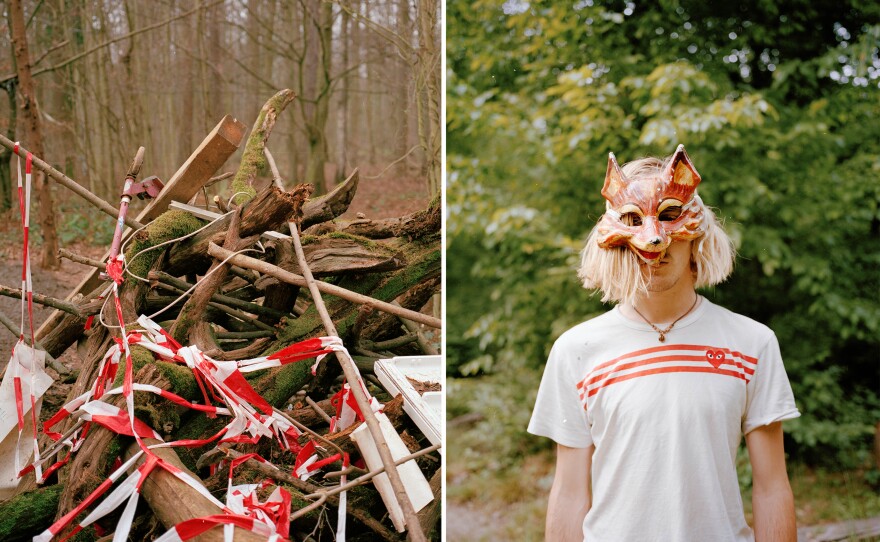The 12,000-year-old Hambach Forest in western Germany is under threat. The country's biggest power company, RWE, has been clearing the ancient natural resource to make room for coal mining. Currently, there is only 10% left of the forest's original 13,500 acres.
Hoping to halt the decimation, environmental activists have been squatting in the forest since 2012.
"No one is coming to save us, so we have to save ourselves," says an activist who goes by Tricky, the forest name he uses to protect his identity.
"People on the front lines in more oppressive societies [are] met with violence and death if they speak out," he says. "It's a duty to use my privilege to take action."


Photographer Néha Hirve first heard about the community of people living in the forest when she was in India working on another project. Then, in November 2017, news of Hambach's destruction started making headlines, and Hirve felt compelled to bear witness.
"Soon, there might not be a forest anymore," she told herself. Hirve left for Germany a week later and decided to do a photo story on the community fighting Hambach's destruction.

When she arrived, she called a phone number someone gave her and an anonymous person told her she could visit — though she might not get past the police barricade. She decided to go anyway.
She arrived in the nearest town after dark, went into the forest and, without seeing any police, kept walking until she found the first structure built by the squatters.
She knocked on the door. The activists living there allowed her in.
"It was so cold and damp. I thought I would never be able to last a week," Hirve says. "The place felt like the apocalypse was about to occur."

Over the course of nearly a year, Hirve visited the camp several times. Though she expected big battle scenes and clashes between police and activists, she never witnessed any police action firsthand — the confrontations all happened when she wasn't there. She decided to focus instead on the waiting, the absurdity of it.
"They seemed like heroes from a childhood fairy tale, protectors of the forest, living in trees," Hirve says. "I'm driven towards stories of people seeking alternatives to mainstream society, and I was trying to understand what it was actually like, the day-to-day of it — I wanted to try this myself."


Through her work, we are drawn into the world of those who, for the sake of a greater cause, have chosen risk over safety. The resulting images are depictions of an alternative life in the forest. Some of them are theatrical; others are beautifully youthful.
We see people wearing animal masks, surfing down piles of mud, hanging around in camouflage, building barricades made of trash. The setting feels playful and magical, even though the risks and issues at hand are very real.
By photographing a place of waiting and wishing, Hirve captures the activists' state of mind. She's also able to convey the humor and lightheartedness of the community while raising questions about society in decay.

Hirve didn't expect the apocalyptic "Day X" that the activists feared to really arrive. However, in September 2018, it did. Police and special forces began a massive and systematic eviction of the area, destroying the treehouses and arresting activists for five days before a journalist fell from a tree and died, halting the process. It is believed to be one of the largest and longest police operations in the German state of North Rhine-Westphalia.
Hirve's story had an ending, and the current struggle has at least a temporary ending: For now, RWE has told the state government that it will not touch the Hambach Forest until late 2020.
But the final ending — of the story of the eco-activists and the long-term future of Hambach — is still uncertain.
That's what Hirve's work touches on: uncertainty and frustration. "What else do we have, if not our need to keep fighting in the face of the end of the world? And why must we wait for the end of the world to act?"
Copyright 2023 NPR. To see more, visit https://www.npr.org. 9(MDAzMjM2NDYzMDEyMzc1Njk5NjAxNzY3OQ001))






